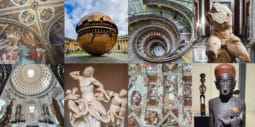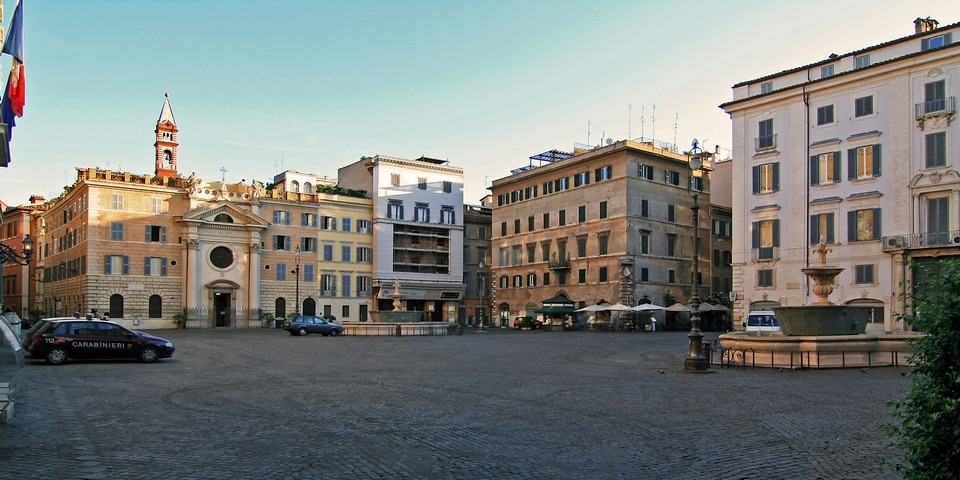

989368 travellers read

Regola district itself occupies just a small area of the city. Nevertheless, it offers visitors plenty of delights, from spacious palaces to some of the finest bakeries in Rome. Consider setting aside some time to visit the Regola district and immerse yourself in this neighbourhood’s rich history and unique atmosphere.
Contents
ToggleLike the Parione district, Regola was once part of the Campus Martius (Field of Mars) in Ancient Rome. Afterwards, the area of the modern district was used as a stadium where riders of the triga (a three-horse chariot) trained. By the end of the Middle Ages, the area was sparsely populated and considered unhealthy due to frequent flooding.
Interestingly, the inhabitants of the Regola district were nicknamed mangiacode – ‘taileaters’ – after the dish coda della vaccinara. This dish was a speciality of the area’s numerous butcher’s shops.
Today, the Regola district is a charming area that tourists often find appealing, as it is usually less crowded and offers a variety of sights. Consider exploring the Regola neighbourhood if you’re seeking to escape the more typical tourist spots and discover another side of the Eternal City.
Below is a list of places to visit in the Regola district:
At the district’s heart lies the long, narrow Piazza Farnese.
This, in turn, leads to Palazzo Farnese, widely regarded as one of the city’s most significant High Renaissance palaces. Alessandro Farnese, appointed cardinal in 1493 at the age of 25, commissioned the palace’s construction in 1517. Subsequent expansions of the palace aptly reflected his rising status.
In 1534, Alessandro became Pope Paul III. As a result, the palace was significantly enlarged. Furthermore, the construction involved some of the most prominent Italian architects of the 16th century, including Michelangelo, Jacopo Barozzi da Vignola and Giacomo della Porta. In Puccini’s renowned opera Tosca, one scene is set in Palazzo Farnese, and many Italian and international filmmakers have also used its splendour as a film location. The building now serves as the French Embassy to Italy. In 1936, the Italian Republic granted the palace to the French government for a 99-year term.
Address: Piazza Farnese 67, 00186
Situated adjacent to Palazzo Farnese, this palace is best known for its perspective gallery.
The gallery comprises a short passageway crafted by Borromini to link the palace’s inner courtyard to the open space beyond. Thanks to the optical illusion, Borromini made this passage appear far longer than it really is. At the passage’s end stands a sculpture of a nymph reclining atop an ancient sarcophagus.
Read more about the Spada Gallery.
See also the Ultimate Guide to Borromini’s Masterpieces in Rome.
Here is a selection of notable restaurants and bars in Regola:
Supplizio is the first street food corner from renowned Italian chef Arcangelo Dandini, showcasing his passion for supplì — the quintessential Roman street food — and ancient Roman cuisine.
Supplizio fully embodies Arcangelo’s tribute to tradition, with a cosy, rustic ambience arranged like a salotto (living room). Visit Supplizio and sample Roman street food crafted with exceptional care and quality.
The Jerry Thomas Speakeasy was conceived to revive the forgotten brilliance of classic mixology. The interior is small and atmospheric, evoking 1920s Prohibition-era chic, with thematic jazz playing in the background. This was Italy’s first ‘secret bar’, which means guests must know the password to gain entry.
The password can be discovered by completing a short survey on the website and signing up with your email address. For an even more memorable stay in Rome, the Jerry Thomas is definitely worth a visit.
Bringing the sweet flavours of Sicily to Rome, the Nonna Vincenza pâtisserie is a delight.
Browse the traditional cakes and tempting Dolci (sweet pastries) displayed in antique wooden cabinets before moving to the adjoining bar to savour creamy, flaky pastries and ricotta-filled cannoli.
Address: Via dell’Árco del Monte, 98
Author: Kate Zusmann
This website uses cookies. For more info read the cookies policy
RomeItaly.guide © 2025. Created with love by Roman experts and guides.